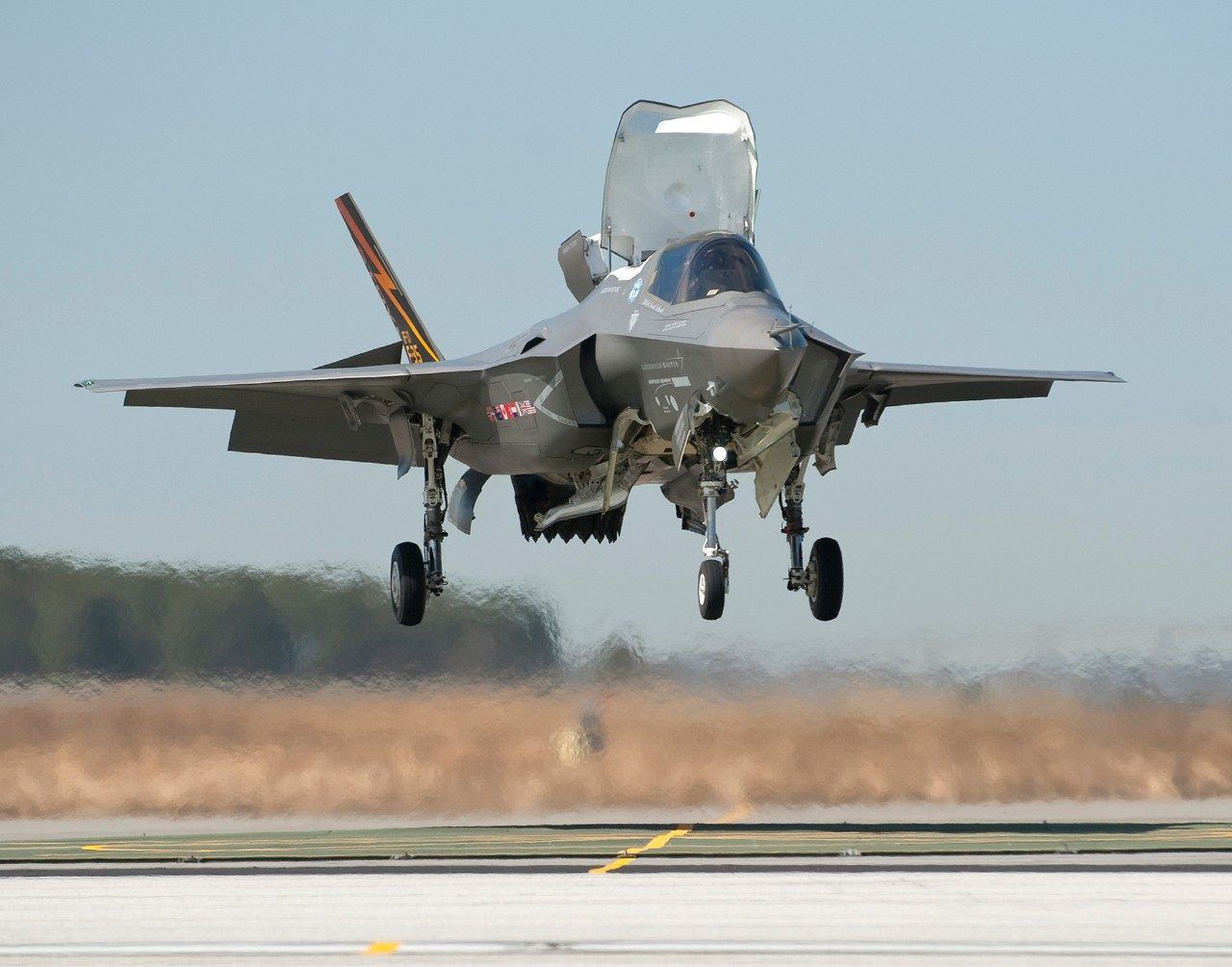On December 15, a Lockheed Martin-owned F-35B Lightning II was involved in a mishap as it attempted to land on a runway at the Naval Air Station Joint Reserve Base (NAS-JRB) Fort Worth in Texas.
The reasons for the F-35 crash last week are still being investigated. But the incident’s footage revealed one interesting aspect of the plane: an “auto-eject” feature that, under certain circumstances, may activate the jet’s Martin-Baker US16E ejection seat without ‘pressing the button.’
The F-35B has a short take-off and vertical landing capability. The F-35B is first seen hovering over the runway in the video. The plane begins to descend vertically at a relatively rapid rate as the video continues.
The jet briefly touches down after that, bounces back into the air, suddenly pitches forward, and then quickly descends again, hitting the runway with its nose. The jet’s nose gear breaks off due to the forceful impact.
The pilot is then observed ejecting from the aircraft. The incident had brought attention to the US16E ejection seat’s purported “zero-zero” capabilities, as previously reported by the EurAsian Times.
The term “zero-zero” describes the ejection seat’s ability to work safely and save the pilot’s life at zero height and zero speed, even while the aircraft is motionless on the ground. However, it is unknown if the aircraft’s auto-eject mechanism was activated during the incident on December 15.
On December 17, Rob Wingfield, a former USAF officer, also noted that the Martin-Baker Mk16E/US16E ejection seat (fitted in the F-35) does have auto ejection when used in STOVL aircraft.
Wingfield tweeted, “the Mk16E / US16E ejection seat by @MB_EjectEject (installed in the F-35) does come with auto ejection when installed in STOVL aircraft. I’m wondering if the Texas F-35 mishap pilot punched on his own or the seat made that decision for him.”
https://twitter.com/therobwingfield/status/1604061140333789184?s=20&t=visrDi79XAniKm3ONrr2LA
The ability to auto-eject is also listed as one of the characteristics of the US16E on Martin-Baker’s website. According to previously made public material by the F-35 JPO, the F-35B is the only variant of the Joint Strike Fighter to be equipped with this system.
Auto-Ejection Feature In Lockheed Martin F-35B
The F-35 comes in three main variants, each of which differs significantly from the others in various ways. However, the F-35B has a unique core layout because of this unique propulsion configuration.
The F-35B is currently in service with the United States Marine Corps, the Royal Air Force of the United Kingdom, and the Italian armed forces. In RAF and Royal Navy service, the F-35B superseded all versions of the Harrier jump aircraft, another vertical take-off and landing-capable combat fighter. It is also expected to eventually replace the Harrier in the US Marine Corps.
It is worth noting that the Cold War-era Soviet Yak-38 and Yak-141 jump planes had engine configurations more akin to the F-35B. However, both had vertically mounted jet engines rather than lift fans and auto-eject systems.
“Why do we need auto-eject?” Graham Tomlinson, a test pilot with BAE Systems who participated in early F-35B flight testing, explained during a discussion organized by the Royal Aeronautical Society in 2020.

He said that the Harrier lacks an auto-eject feature. Throughout its lifespan, they’ve experienced one or two engine issues that caused it to sink into the water or the ground as the pilot ejected.
As a result, when the engine starts to sputter and cough, the thrust loss is roughly symmetric and comes close to the center of gravity, Tomlinson added.
On the other hand, “On the F-35B, if you lose the core engine, you get an instant pitch up. If you lose the lift fan, you get an instant pitch down,” he noted.
He emphasized that the simulations had indicated that a failure in F-35B would make things dangerous; if the drive shaft were to break during a hover, an F-35B would end up toppling over nose down in less than two seconds.
It is unclear exactly how or by what criteria the auto-eject system judges that the aircraft is not within the pilot’s control and initiates the ejection sequence. Its precise status on the F-35B fleet is also unknown.
To help prevent the pilot from ejecting in dangerous circumstances, it is known that the US16E seats on all F-35 models are also connected to the aircraft’s flying systems.
It is yet to be observed how the inquiry resolves the mystery surrounding the accident on December 15 and whether the F-35B’s auto-eject system turns out to have had any role.
In any case, the Joint Strike Fighter B variant’s auto-eject capability is an intriguing and little-known function that is reportedly crucial for the jet’s unusual capacity to hover in midair.
- Contact the author at ashishmichel(at)gmail.com
- Follow EurAsian Times on Google News